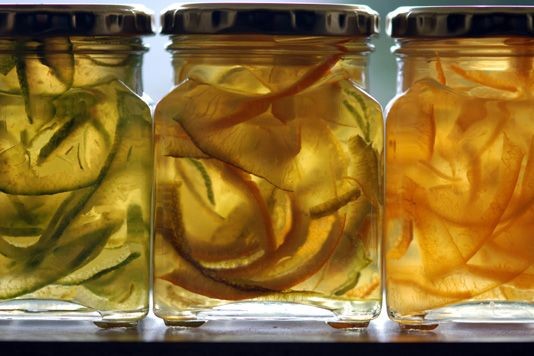Now is the time to make marmalade

January is officially marmalade making month. Filling your house with boiling cauldrons of marmalade and eating sticky slices of toast with friends is definitely a more enticing prospect than filling your fridge with celery.
I was recently in India and was amazed to see marmalade on the breakfast menu at the small beach-shack we frequented in the morning, post-yoga. I ordered some, to follow exotic papaya, pineapple and pomegranate - more seemingly appropriate foods for the beach.
The marmalade appeared in a small bowl and consisted of lots of rind like grated carrot, with less runny jam. I dolloped it onto a home-made chapatti and, despite its different incarnation, was pleased to find it mouth-wateringly delicious. Not too sweet or obvious, but perfectly balanced as my earlier headstand - errr. The incongruity of a condiment that I associate with Agas, England and gingham topped jars with India and the sand under my toes only made it tastier.
Marmalade always surprises me, and I’m not alone. You never hear people in raptures about strawberry jam or peanut butter, but marmalade… marmalade really gets the juices going. It even sounds special, with its tumbling romantic lull. Needless to say I had it every day for breakfast in India and it added a little je ne sais quoi to the blue sky, white sand thing going on. I was reluctant to leave for a different beach when the time came, though I know that sounds hardly intrepid.
Is marmalade a jam?
‘A Jam? You want to stay because of a jam?!” my boyfriend was despairing. But marmalade’s not really a jam. A jam is pretty sweet and unsophisticated whereas marmalade has a bitter kick. It’s the Campari of the spread world and wouldn’t answer to ‘orange jam’, just as haughty cats of a similar hue wouldn’t answer to anything.
Marmalade has peel in it, another stand-out feature, unless you’re opting for the Wilkins & Son No Peel Orange variety you can pick up in most big shops. This is nice and spreadable, though sort of defeats the point – much better to make your own batch and cut the peel super slim, if that’s how you prefer it.
There’s some dispute over the origin of marmalade. Dundee claims to be the mother of its invention, making it traditionally Scottish. But the root of the word really hails from Portugal, where quince is ‘marmelo’ and ‘marmelada’ is a quince jam of sorts. Even if marmalade doesn’t actually originate from Harrods it still makes me proud to be British and conjures up long shiny tables decked with tiny spoons and silver dogs.
It's officially marmalade-making time!
And the point of all this citrus celebration is that it’s January now – official Marmalade making time, when the Seville oranges are harvested and sent pinging to supermarkets near you. These Spanish oranges are higher in pectin than normal oranges so set well, for the novices among us, while imparting a distinct bitter and sharp flavour that holds steadfast against the sugar.
Filling your house with boiling cauldrons of marmalade and eating sticky slices of toast with friends is definitely a more enticing prospect than filling your fridge with celery in this the cruelest month. Anyway a good breakfast is key to losing weight, if you’re keen to shed your post-Christmas muffin top – though it will prove a challenge to not eat marmy coated things throughout the day.
My recipe was passed down by someone’s late nanny called Joan to Jonathan Franklin in Suffolk, to me, so it’s been tried and tested many a season. It’s a recipe for whisky marmalade, which works wonders with sausages, but you can omit the whisky if you want to keep things simple. Whichever you opt for the result will be a little taste of heaven - or rather Marmalade Skies.
This is a classic lovefood article
Also worth your attention
Seville orange whiskey marmalade recipe
Seville marmalade ice cream recipe
Comments
Be the first to comment
Do you want to comment on this article? You need to be signed in for this feature